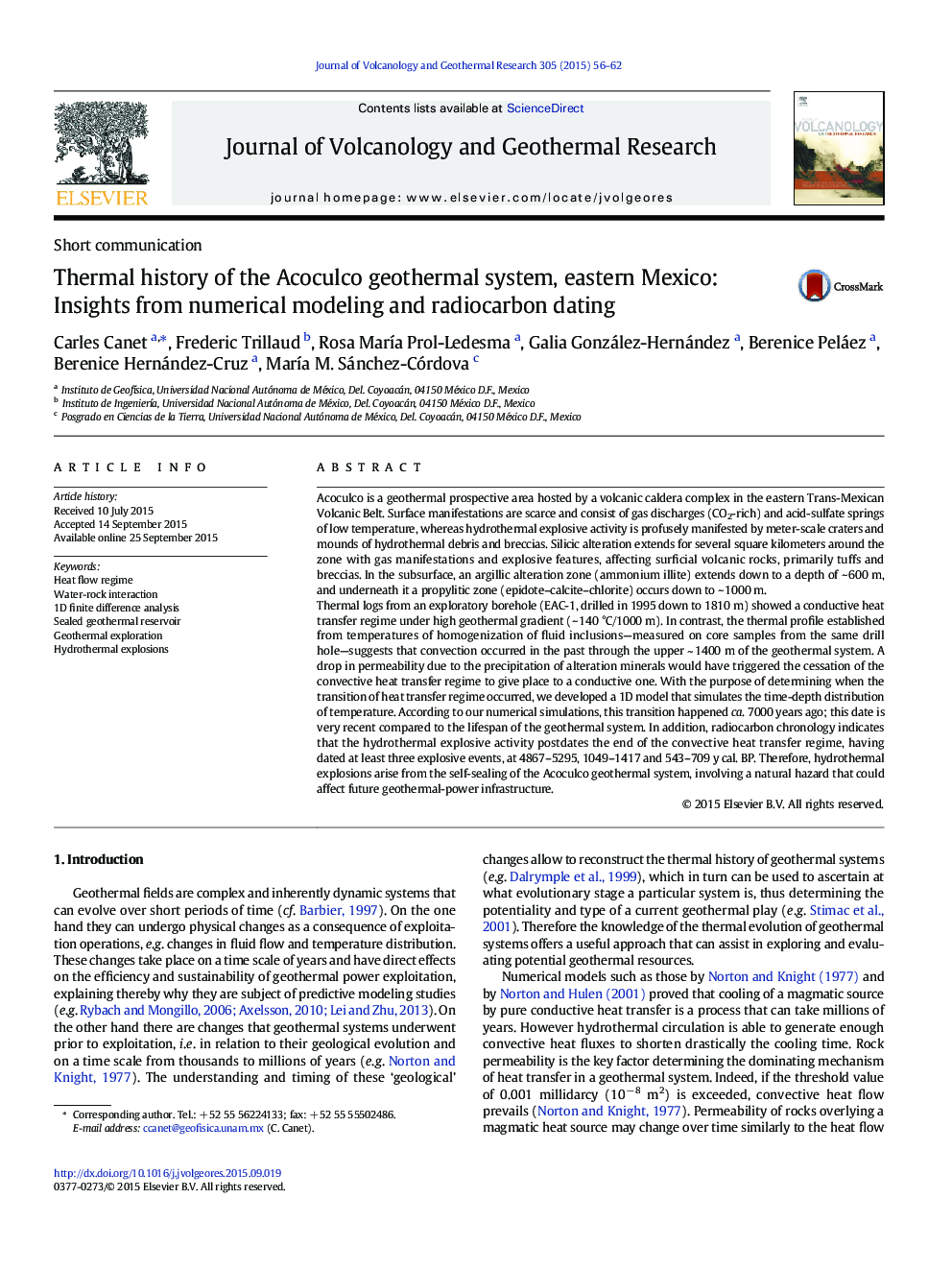| کد مقاله | کد نشریه | سال انتشار | مقاله انگلیسی | نسخه تمام متن |
|---|---|---|---|---|
| 4712809 | 1638317 | 2015 | 7 صفحه PDF | دانلود رایگان |

• Transition from convective to conductive regime occurred 7000 years ago.
• Hydrothermal explosive activity postdates the end of convection.
• Hydrothermal explosions arise from self-sealing and involve a natural hazard.
Acoculco is a geothermal prospective area hosted by a volcanic caldera complex in the eastern Trans-Mexican Volcanic Belt. Surface manifestations are scarce and consist of gas discharges (CO2-rich) and acid-sulfate springs of low temperature, whereas hydrothermal explosive activity is profusely manifested by meter-scale craters and mounds of hydrothermal debris and breccias. Silicic alteration extends for several square kilometers around the zone with gas manifestations and explosive features, affecting surficial volcanic rocks, primarily tuffs and breccias. In the subsurface, an argillic alteration zone (ammonium illite) extends down to a depth of ∼ 600 m, and underneath it a propylitic zone (epidote–calcite–chlorite) occurs down to ∼ 1000 m.Thermal logs from an exploratory borehole (EAC-1, drilled in 1995 down to 1810 m) showed a conductive heat transfer regime under high geothermal gradient (∼ 140 °C/1000 m). In contrast, the thermal profile established from temperatures of homogenization of fluid inclusions—measured on core samples from the same drill hole—suggests that convection occurred in the past through the upper ~ 1400 m of the geothermal system. A drop in permeability due to the precipitation of alteration minerals would have triggered the cessation of the convective heat transfer regime to give place to a conductive one. With the purpose of determining when the transition of heat transfer regime occurred, we developed a 1D model that simulates the time-depth distribution of temperature. According to our numerical simulations, this transition happened ca. 7000 years ago; this date is very recent compared to the lifespan of the geothermal system. In addition, radiocarbon chronology indicates that the hydrothermal explosive activity postdates the end of the convective heat transfer regime, having dated at least three explosive events, at 4867–5295, 1049–1417 and 543–709 y cal. BP. Therefore, hydrothermal explosions arise from the self-sealing of the Acoculco geothermal system, involving a natural hazard that could affect future geothermal-power infrastructure.
Journal: Journal of Volcanology and Geothermal Research - Volume 305, 15 October 2015, Pages 56–62